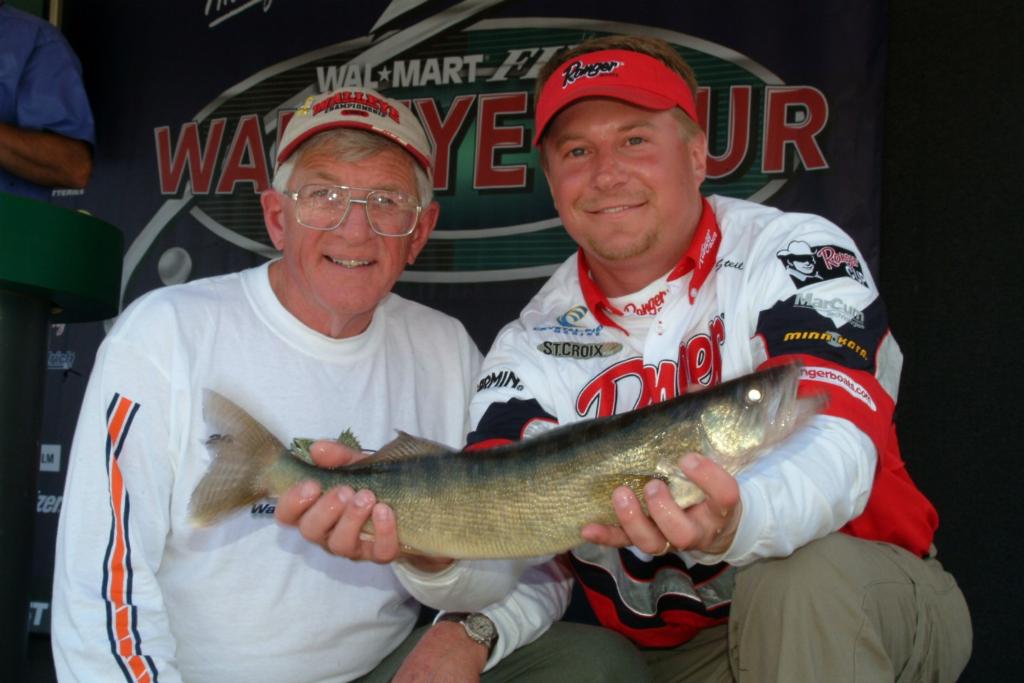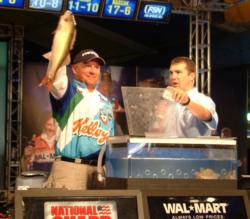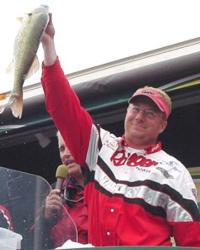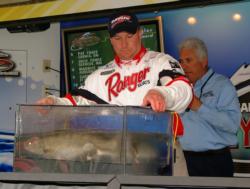Ask the Walleye Pro: Scott Steil

Q: What are some classic fall locations where I should be targeting walleyes? I usually do well pulling bottom bouncers along the mud flats on Lake Mille Lacs in the spring, but that bite seems to die in July. This year I’ve promised myself not to put away the fishing gear even though deer hunting season is right around the corner.
-Steve L. Pine City, Minn.
A: Fall is an excellent time to target walleyes, especially trophy walleyes. As the shallow water begins to cool and days get shorter, walleyes begin to move in to feed heavily during low-light periods. Some classic locations you want to target in the fall are shallow rocks, weeds and gravel.
I prefer to troll or cast crankbaits in the fall. I usually start at sun down and fish well into the night or even the next morning. Trolling large shallow-running cranks is an excellent way to cover a lot of water and find areas where walleyes are feeding. I target 6-8 feet of water starting out and work shallower and deeper until I am consistently getting bit.
 The fall bite on Mille Lacs is as good as it gets in my opinion and you have a chance to put that fish of a lifetime in the boat any given night.
The fall bite on Mille Lacs is as good as it gets in my opinion and you have a chance to put that fish of a lifetime in the boat any given night.
Q: Why do saugers prefer deeper water?
-Justin, Lake City, Minn.
A: It is a common misconception that saugers prefer deep water. Personally, I believe saugers prefer areas of low light penetration which often times is deep water. However, saugers thrive in turbid waters that offer very little light penetration and are often caught in very shallow water in these situations.
The Illinois River is a perfect example of a river system that is turbid and offers very little light penetration. Feeding saugers can be caught in 3-7 feet of water under these conditions. However, as the river clears up, the fish tend to mover deeper. This is true on most lakes and rivers.
Q: How do walleyes survive in southern reservoirs like Greers Ferry and Bull Shoals? It’s hot down there, plus I know walleyes prefer water that is around 65 degrees. This doesn’t make sense to me.
-Cedar Falls fisherman
A: Walleye have the ability to adapt to many different water types. Lakes like Greers Ferry and Bull Shoals are very clear but also are very deep. This deep water is the key to survival for many  species. Although the surface temperature of many of the southern reservoirs gets very warm, the deep water in the lake maintains a much more favorable temperature for many cool-water species.
species. Although the surface temperature of many of the southern reservoirs gets very warm, the deep water in the lake maintains a much more favorable temperature for many cool-water species.
In addition, these lakes have huge forage bases because of their size and fertility. When you combine this with a long growing season you can produce some very large walleyes as well as sustain a nice, fishable population.
Q: Over time, will the smallmouth boom on Lake Mille Lacs have a negative affect on the walleye population? A few weeks ago, I caught a huge smallmouth, roughly 20 inches, that spit up a small walleye when I brought it in the boat. I know it was a walleye because the tip of the tail was white.
-Mitch Dirks, Isle, Minn.
A: Personally, I don’t believe the smallmouth bass population has a significant impact on the walleye population in Mille Lacs. Mille Lacs is an amazing fishery and for the most part has a very balanced population of fish. The key to a sustained walleye population is maintaining adequate spawning biomass in the lake. As long as there are plenty of healthy, mature female walleyes to spawn each year, we will have a good population of walleyes. The protected slot on Mille Lacs is designed to protect the spawning females and thus the future of the lake.
In years of low forage, like this year, several species do prey upon young of the year walleye, including smallmouth. But, for the most part, it is the yellow perch that is the primary forage base for the lake.
Q: I usually use a plain hook when I am slip-bobber fishing with redtail chubs. Should I be using a jig? If not, what size of plain hook is right?
-Rick Neill, Fort Pierre, S.D.
 A: I prefer a plain hook on my slip bobber set-ups. If I were to use redtails on a slip bobber I would be using a No. 2 hook at a minimum. Assuming you are after big fish with big bait, don’t be afraid to use a bigger hook.
A: I prefer a plain hook on my slip bobber set-ups. If I were to use redtails on a slip bobber I would be using a No. 2 hook at a minimum. Assuming you are after big fish with big bait, don’t be afraid to use a bigger hook.
One other thing you may want to consider on your slip bobber set-up is a piece of fluorocarbon line, like Berkley Vanish. I use about 2 feet of fluorocarbon line as a leader for its added strength and durability. It can really make a difference in clean water.
Q: The world record walleye was caught in Greers Ferry Lake in Arkansas. Do you ever see a pro walleye tournament being held on this lake and have you ever fished this lake? Thanks.
-John Savu, Edgemont, Ark.
A: I have never personally fished Greers Ferry, but I am sure my travels will take me that way in the future. As walleye tournament fishing grows, so does the lakes and areas we fish. The key to having successful tournaments on southern reservoirs is timing. Spring tournaments can be very tough, as the fish are shallow but the water is clear. Having a summer tournament when the fish are feeding aggressively on the deep points of the reservoir would make for a nice tournament.
I don’t know anyone on tour, including myself, who wouldn’t enjoy catching one of the giant walleyes roaming Greers Ferry.
Scott Steil is an up-and-coming walleye pro from Richmond, Minn. Despite being young in age, Steil has qualified for the FLW Walleye Tour Championship in each of the past four seasons. In 2006, he finished seventh in the Land O’Lakes Angler of the Year race and sixth at the FLW Walleye Tour Championship. In total, Steil has three top-10 finishes and $73,000 in career FLW Outdoors earnings to his name. Steil’s sponsors include Ranger, Evinrude, Minn Kota, Berkley, Crystal Pierz Marine, Strikemaster, Otter Outdoors and Stone Legacy.